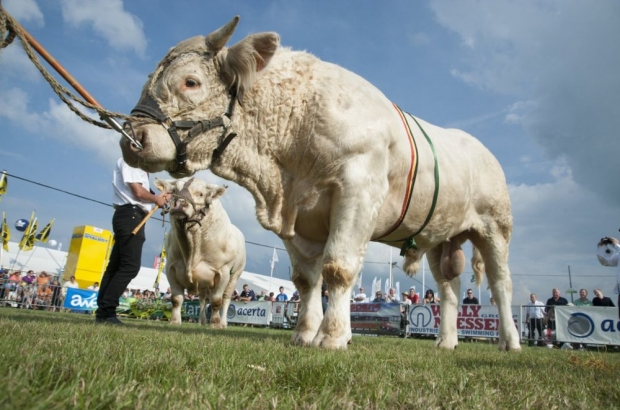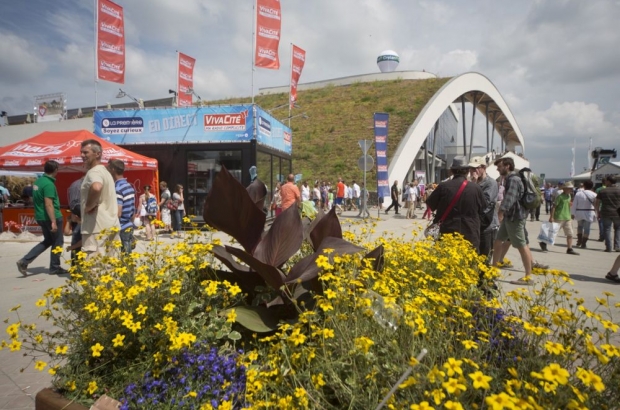- Daily & Weekly newsletters
- Buy & download The Bulletin
- Comment on our articles
Are you going to Libramont fair?
Animals, farming, forestry and food… for its 81st edition, Libramont Fair is preparing once again to show off its agricultural know-how to visitors from home and abroad.
It certainly has a long and illustrious history. The event was founded in 1926 by a group of enterprising horse breeders who were already successful in selling their sturdy Ardennes draught horse to buyers abroad. Such was the reputation of the local breed that it was shipped to Latin America and the US from the beginning of the 20th century. Its strength and temperament meant it frequently served as a war horse and it’s claimed it was the only horse with the stamina to survive Napoleon’s Russian retreat in 1812. “They’re robust, rustic and easy-going, a little like the people of this region,” says director Dominique Perat, laughing.
She explains that over time the breeders organised competitions for other animals as well as the sale of agricultural materials. But World War Two saw the deaths and deportation of local men, and the horses were requisitioned by the Germans. After the war, the organisation reformed but the horse was no longer the driving force of agricultural machines and had been replaced by tractors.
The breeders had the foresight to diversify into other rural activities such as show jumping. By the 1980s the fair was already substantial in size and multi-disciplinary. The fair’s organisers had a nomadic existence as they abandoned their headquarters at Marloie, near Marche-en-Famenne, to camp on the fair site in Libramont during July. This changed in 1997 when the first permanent structure was built, which kick-started expansion.
For Perat, there needs to be a balance between serving the general public as well as the fair’s professional clientele. “The fair is very much a showcase for the sector and it’s important that we convey a message via our themes which symbolise the environmental values we share. All the latest environmental trends are values shared by the fair and the world of tomorrow.” The motif of sustainability is echoed in the DemoForest forestry event that follows on 28 and 29 July, while next year’s theme will be food waste.
Visitor numbers and turnover are boosted by the additional facility, Libramont Exhibition & Congress. Rising out of the middle of the fair’s 60-hectare green site, the towering glass structure doubles as a beacon for the local economy. Five floors house an exhibition space, animal enclosure, seminar rooms, auditorium and dining area. A business club on the upper floor benefits from a panoramic view of the countryside and the green roofs that enable the building to integrate into its site.
“The exhibition and business centre is a tool to develop the fair’s activity all year round,” Perat says. “It gives us visibility at a European level and at the same time it’s very important for us to be integrated in the region. The business club enables entrepreneurs to meet up for various events.”
If the fair attracts public visitors principally from Belgium, it draws a professional crowd from all around the world. Official delegations count for many of these and the 2015 edition is looking forward to welcoming the Chinese ambassador to Belgium. Professionals are not limited to the agricultural world. Company leaders, engineers and organisations such as the Union Wallonne des Entreprises all find the fair an ideal setting for meetings and business. Perat: “Friday is mainly for professionals, Saturday is traditionally for animal breeders, Sunday is a family day with the blanc bleu belge cattle on show, and Monday is when business deals are signed. That’s when I know if it’s been a successful show”
In addition to its green credentials – recycling and renewable energy – Libramont sets its sights on the environment and farming world of tomorrow. “It’s important to be attentive to the needs of the sector,” she says. “Our company consists of eight commissions which help develop products that correspond to the market. It’s even more important to anticipate trends and manage times of crisis. How will youngsters today live off the land in the future? How will animal competitions be organised and how are fairs run abroad? We also keep up to date with digital technology, which helps us enormously.
Perat’s message for the public is: “They can experience an exceptional event in terms of having a good time, as well as learning about the agricultural world. They will leave here with a vision about farming that without them knowing it has such an influence on their world.”



















